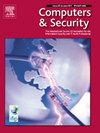AECR:基于微调大语言模型的自动攻击技术情报提取
IF 4.8
2区 计算机科学
Q1 COMPUTER SCIENCE, INFORMATION SYSTEMS
引用次数: 0
摘要
网络威胁情报 (CTI) 报告包含有关网络攻击活动的丰富情报,为安全分析人员推断攻击趋势和加强防御提供了巨大帮助。然而,由于报告内容和写作风格的多样性,目前的情报提取大多基于耗时的人工操作。此外,现有的自动方法通常会忽视背景知识的重要性,并产生不精确的提取结果。这些问题阻碍了 CTI 报告情报的有效利用和共享。在本文中,我们主要关注攻击技术(AT)情报的自动提取,它揭示了攻击行为的模式,而且几乎不会随时间发生变化。我们提出了一种新颖的 CTI 报告自动 AT 提取管道(AECR)。AECR 基于微调大语言模型 (LLM) 探索了提取 AT 情报的可行性。特别是,我们为所选 LLM 赋予了增强的特定领域知识,以提高其对 AT 相关内容的理解能力,并缓解幻觉问题。实验结果表明,AECR 以合理的时间成本大大超越了最先进的方法。具体来说,我们将准确率、精确度、召回率和 F1 分数分别提高了 108%、37.2%、22.4% 和 67.5%。据我们所知,AECR 是第一个基于微调 LLM 进行 AT 提取的方法。本文章由计算机程序翻译,如有差异,请以英文原文为准。
AECR: Automatic attack technique intelligence extraction based on fine-tuned large language model
Cyber Threat Intelligence (CTI) reports contain resourceful intelligence on cyber-attack campaigns, which provides great help for security analysts to infer attack trends and enhance their defenses. However, due to the diversity of report content and writing styles, current intelligence extraction is mostly based on time-consuming manual efforts. Moreover, existing automatic methods generally neglect the importance of background knowledge and produce inexact extraction results. These problems prevent the effective utilization and sharing of intelligence from CTI reports. In this paper, we primarily focus on the automatic extraction of attack technique (AT) intelligence, which reveals patterns of attack behaviors and hardly changes over time. We propose a novel automatic AT extraction pipeline for CTI reports (AECR). AECR explores the feasibility of extracting AT intelligence based on a fined-tuned large language model (LLM). Particularly, we endow the selected LLM with enhanced domain-specific knowledge to improve its comprehension of AT-relevant content and alleviate the hallucination problem. Experimental results demonstrate that AECR outperforms state-of-the-art methods by a wide margin with a reasonable time cost. Specifically, we improve the accuracy, precision, recall, and F1-score by 108%, 37.2%, 22.4%, and 67.5% respectively. To the best of our knowledge, AECR is the first to perform AT extraction based on fine-tuned LLM.
求助全文
通过发布文献求助,成功后即可免费获取论文全文。
去求助
来源期刊

Computers & Security
工程技术-计算机:信息系统
CiteScore
12.40
自引率
7.10%
发文量
365
审稿时长
10.7 months
期刊介绍:
Computers & Security is the most respected technical journal in the IT security field. With its high-profile editorial board and informative regular features and columns, the journal is essential reading for IT security professionals around the world.
Computers & Security provides you with a unique blend of leading edge research and sound practical management advice. It is aimed at the professional involved with computer security, audit, control and data integrity in all sectors - industry, commerce and academia. Recognized worldwide as THE primary source of reference for applied research and technical expertise it is your first step to fully secure systems.
 求助内容:
求助内容: 应助结果提醒方式:
应助结果提醒方式:


